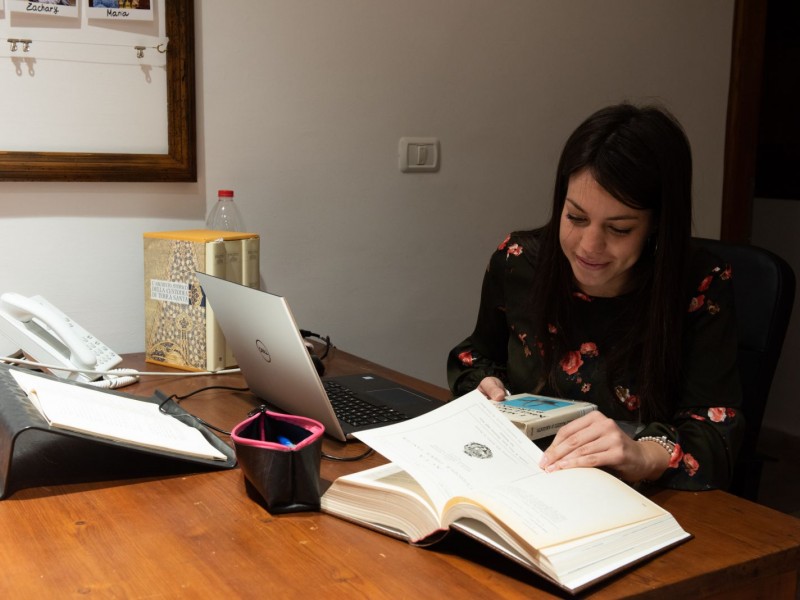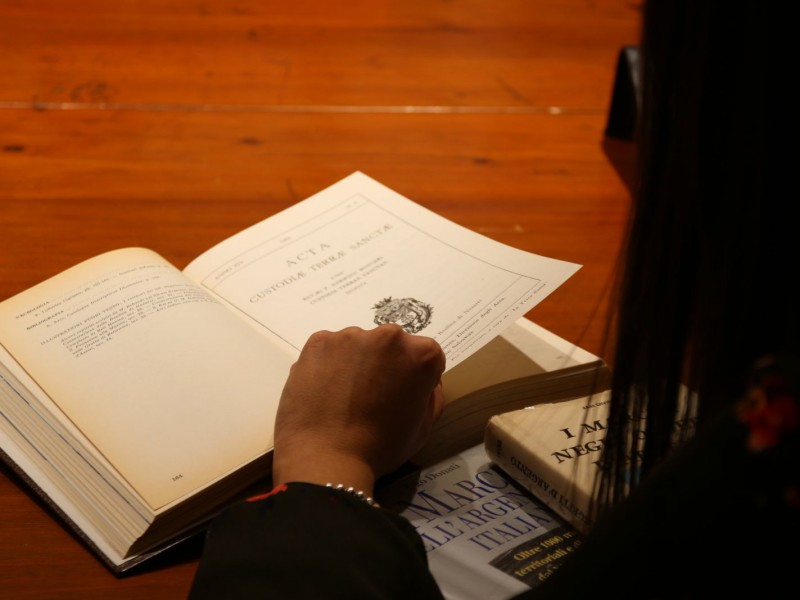The Custody’s collection attracts a foreign student
TERRASANCTAMUSEUM/MEETING. During a volunteer experience in the Department of Cultural Goods of the Holy Land, Carlotta Schiavon, a student in Art History, discovered the unique heritage of the Chalices of Nazareth. On her return to Italy, she chose to devote the subject of her thesis to it. Background.
Carlotta Schiavon graduated in Economics and Cultural Production Management from Ca’Foscari University in Venice. A student in Art History at the Universities of Verona and Trento, she is currently writing her thesis on “Inventories of the Holy Land – History and Use of Nazarene Chalices”.
At the end of your studies, you had the opportunity to do an internship in the cultural department of an organization. Why did you choose the Custody of the Holy Land? 
During my first year in Art Master’s degree, the University proposed that I take part in an Italian cataloging training course. Upon completion of the course, the students were invited to organise an archival cataloging internship for the Cultural Heritage Office of the Custody of the Holy Land.
What were your missions during your volunteering in the Department of Cultural Property of the Custody of the Holy Land?
From January to April 2018, I went to Jerusalem to create catalogs of art objects belonging to the Custody of the Holy Land. I was mainly involved in the inventory of the properties of the Sanctuary of the Annunciation in Nazareth.
When did you discover the existence of the Chalices of Nazareth?
Back in Italy, I wanted to deepen the discovery of the many objects discovered here, which I had not studied during my training. I wanted to make a contribution, however modest, to the environment which I inhabited. I wanted to introduce myself not as an external actor but as an active collaborator of a liturgical art project.
That’s when I realized that I wanted to do my thesis on the chalices of Nazareth. The Holy Land, thanks to the many sanctuaries, has over 400 chalices of different time periods (from the middle of the 16th century until today) and various places: Italian, especially Neapolitan and Venetian, Spanish, German and Russian etc. Over time, many silversmiths analyzed them through their pinons, which identify the period of achievement and geographical origin.
After my experience in the Holy Land, where I trained myself to recognize and describe them, I became more focused on the tradition of the objects of which I still have much to learn, especially iconologically and iconographically, especially as regards the Nazarene chalices.
In studying these chalices, have you discovered information that would shed light on the history of these sacred objects?
My study consists mainly in uncovering the history of the classification of the objects. The specialists of chalices who work at the Custody analyze, for the most part, the form and the artistic aspects. Ultimately, we know very little about them, except that on the three silver chalices I studied, two were donated by Naples and Palermo in 1756, and the third by the Emperor of Austria Franz Joseph in 1869. Tracing their history is difficult, since the only documents we have on them are certain inventories from the 18th and 19th century, which list the objects donated to the Holy Land. Along with the Acta Custodiae (ie. Repertoire of Custody actions), they are the most important of the historical archives in the Custody of the Holy Land.
The work to be done for such goods preserved for 800 years by the Custody of the Holy Land is still considerable, but it was interesting for me to be able to work on these inventories, which constitute a precious witness of what is preserved in Nazareth.




